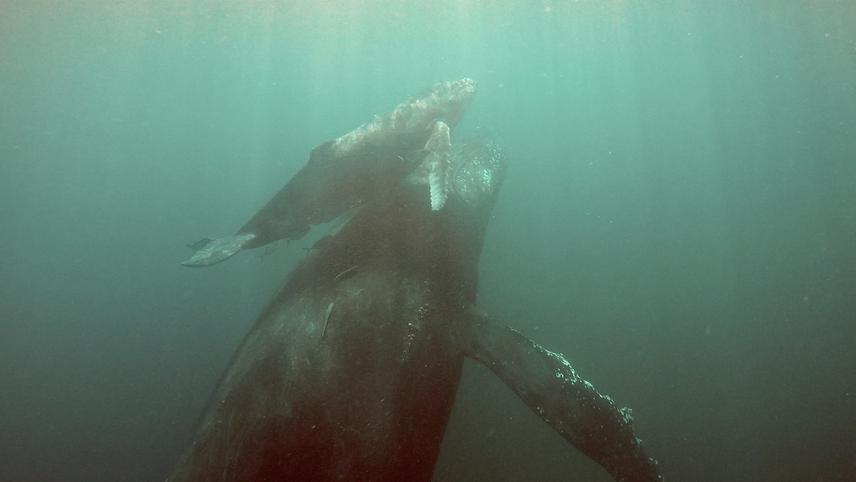Daniel Gustavo von Sperling Vasconcellos Venturini
The aim of this project is to understand the underwater reactions of humpback whales to research sampling techniques in their birthplace off Brazilian coast.

Mother and calf swimming away after a biopsy attempt.
This project will take place throughout the humpback whale (Megaptera novaeangliae) breeding season, from July to November 2016 in the surrounds of Abrolhos Marine National Park, off the coast of Brazil. Using a system of subaquatic cameras attached to the hull of the research vessel used by the Humpback Whale Institute, we will record the underwater behaviours of whales when interacting with the vessel, as well as their reactions when hit by biopsy dart shots - a common technique used for obtaining fresh animal tissue for further molecular analysis. We recognize that such an invasive technique must be fully understood in order to have its potential negative impacts assessed and long-term effects prevented at population level, given that we are dealing with individuals in their birthplace. Research cruises will happen in every opportunity when weather conditions allow, and each field trip lasts 2-4 days on average. Every time the vessel approaches a group of whales cameras will be remotely activated and their behaviours recorded.
Data from both underwater and on-board observations will be gathered together and we will formulate an ethogram for underwater behaviours based on sampled individuals, and categorize the intensity of eventual responses. This data will be used to point out whether certain circumstances make the individual more prone to react, as well as rising up previously ignored effects of the shot, given that only the on-board perspective used to be considered on other studies about reactions of cetaceans. We aim to conclude our study discussing the means by which the sampling is conducted, rising up possible suggestions for an improve of these techniques concerning the well-being of marine animals and proposing eventual reinforcements in whale watching regulation according to observed behaviors when the whale interacts with the vessel.